Plantations
The REA group holds agricultural land allocations in East Kalimantan totalling 75,000 hectares of which 64,000 hectares are fully titled.
The land allocations comprise a core area lying either side of the Belayan River together with satellite areas located within reasonable proximity of the core area. Areas planted with oil palms amount to 36,000 hectares of which 35,000 hectares are mature.
Total land developed for infrastructure is approximately 4,000 hectares.
New Planting
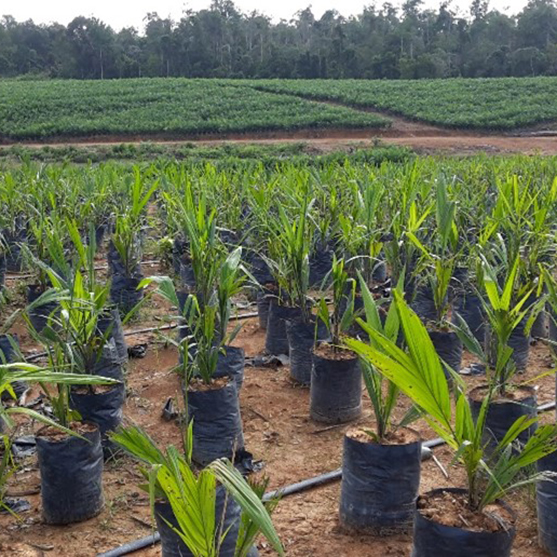
Seedling nursery
Reserve land held by the REA group only becomes available for development when the titling process has proceeded to a point at which the group has been granted development and necessary land clearing licences, and compensation agreements have been reached with local villagers who have claims in respect of their previous use of the land.
All new plantings are grown from specially selected seed bought from third party suppliers able to provide material with well established yield potential. Seed is initially planted out in polythene bags in nurseries where it grows into seedlings suitable for planting over a period of nine to twelve months.
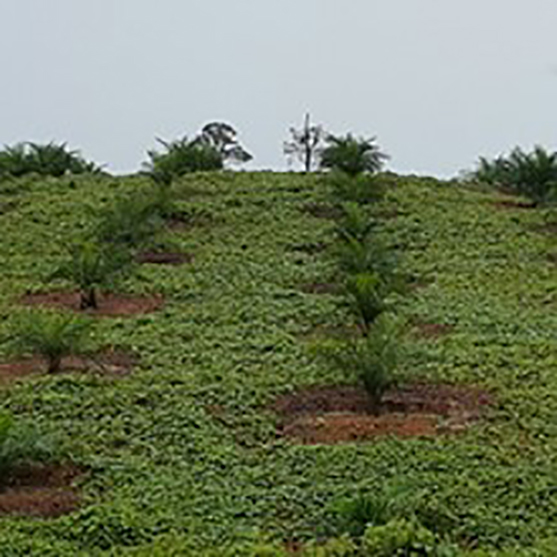
Immature areas
New areas designated for planting undergo several months of preparation during which roads and bridges are established and a legume cover crop is planted. Seedlings are then transported to the prepared areas and planted out in a triangular pattern of 143 palms per hectare. In hillier areas, seedlings are planted on terraces. Young palms grow for about 30 months after field planting before starting to produce fruit.
Harvesting
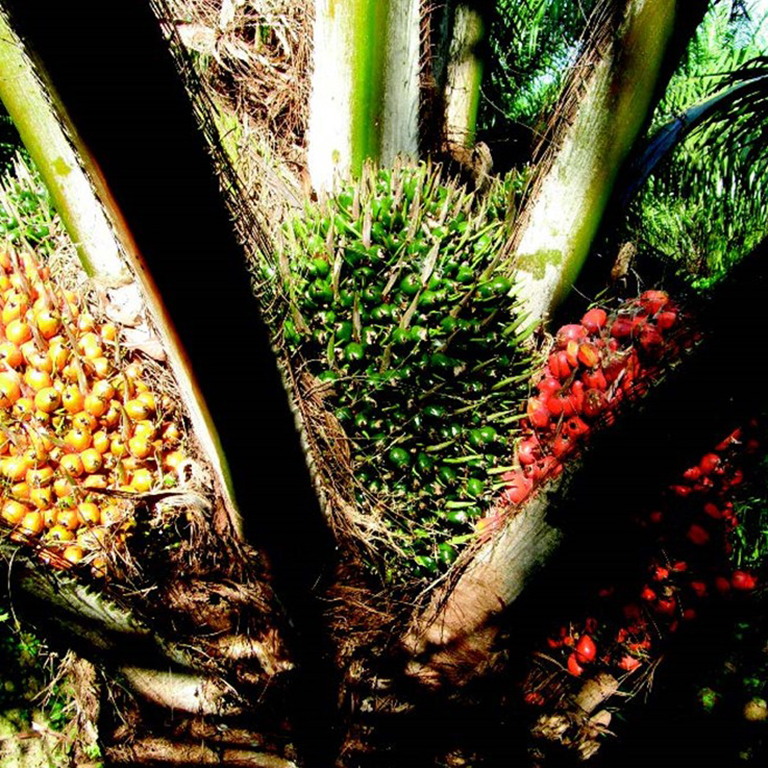
Oil palms fruit continuously throughout the year although fruiting volumes reduce slightly during the drier months of May to August each year. Fruits grow in bunches, known as fresh fruit bunches (FFB), at the intersections of the lower fronds and the trunk. FFB yield per hectare increases to a maximum some 8 years after first yield and is maintained until the last 5 years of the 25-30 year life of the palm.
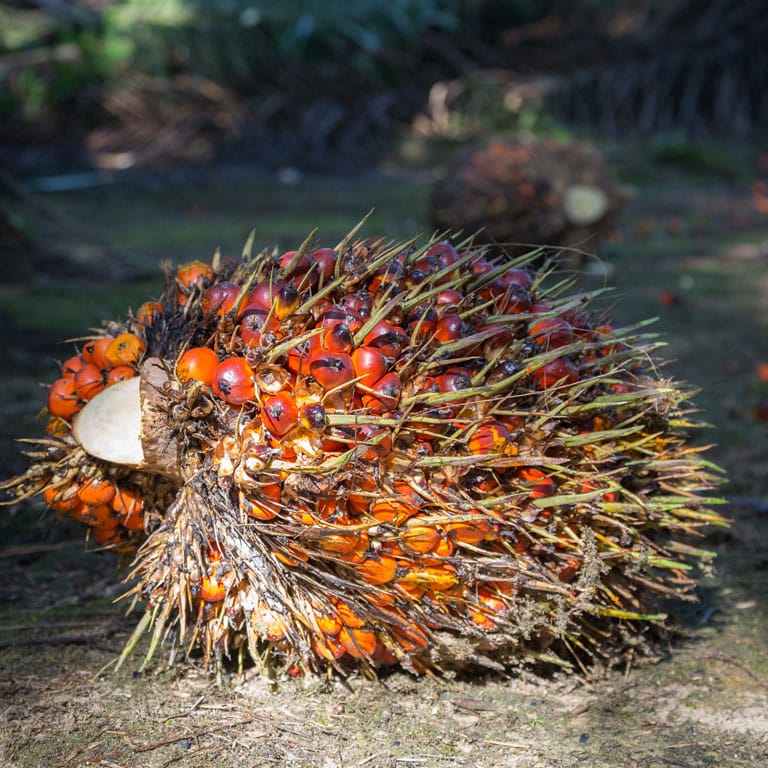
Each FFB comprises up to 100 fruitlets attached to a fibrous husk. Bunch weights increase progressively from 2.5 kg at earliest maturity to 15+ kg at 10 years after planting.
As bunches ripen, fruitlets loosen and detach. Bunches are ready for harvesting after up to 10 loose fruitlets have detached. The riper the fruitlets the greater the crude palm oil content.
Each individual fruitlet is made up of a central endocarp or nut, and an outer pericarp. The pericarp consists of a skin, or exocarp and a fleshy pulp surrounding the nut known as the mesocarp. It is the mesocarp that contains CPO. The nut separately consists of an outer shell and a kernel. The latter contains palm kernel oil, a lauric oil that is similar to coconut oil.
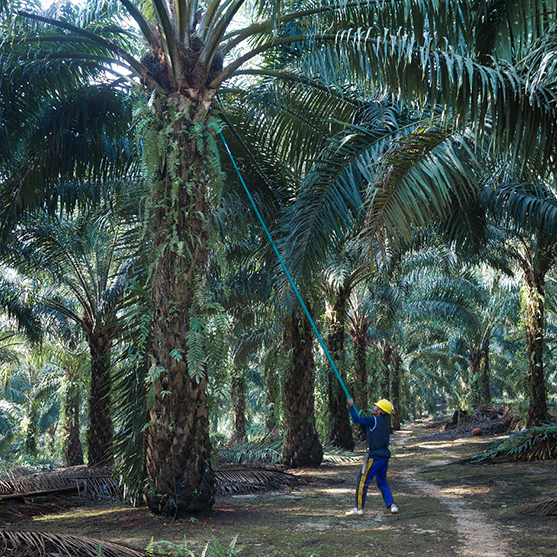
Bunches are harvested manually by harvesters who chop through the base of the bunch using a chisel or, in the case of older palms which are taller, a blade on the end of an extensible pole. Harvesters are trained to harvest only fully ripe bunches and to collect any detached fruitlets which fall off the bunch during harvesting (as these have a particularly high CPO content). Fruit must only be harvested when ripe and the aim is to ensure that every oil palm area is harvested every ten days.
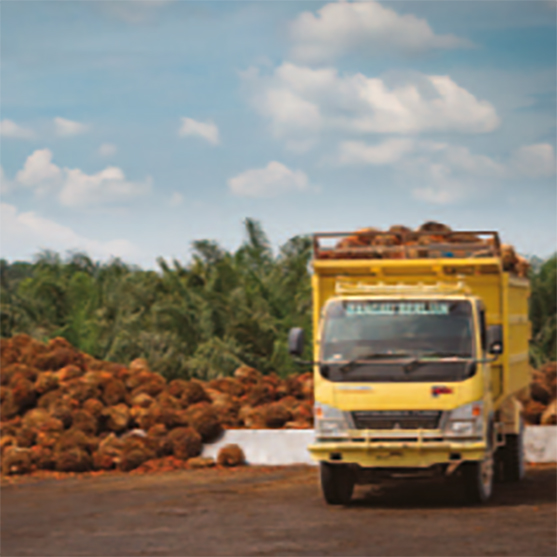
Harvested bunches, together with detached fruitlets, are taken to collection points on the estate roads. From there, they are loaded into mini-tractors and transferred to lorries which transport the crop to the group’s oil mills for processing.
Processing
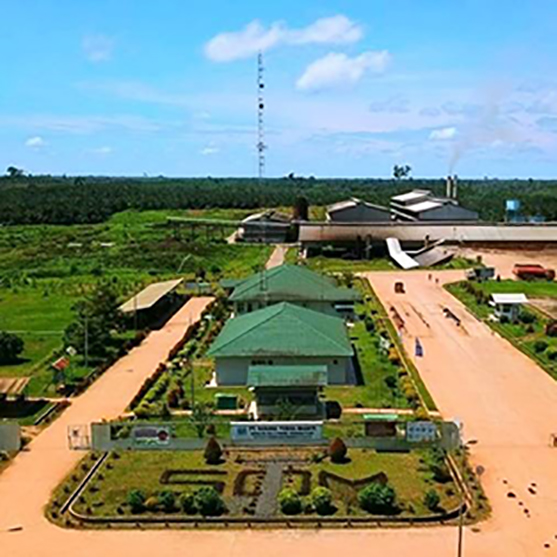
FFB harvested is processed in REA’s three oil mills, which date from 1998, 2006 and 2012, respectively. Each has processing capacity of 80 tonnes per hour. The group has ample processing capacity to meet the requirements for its own FFB production and that of third party suppliers.
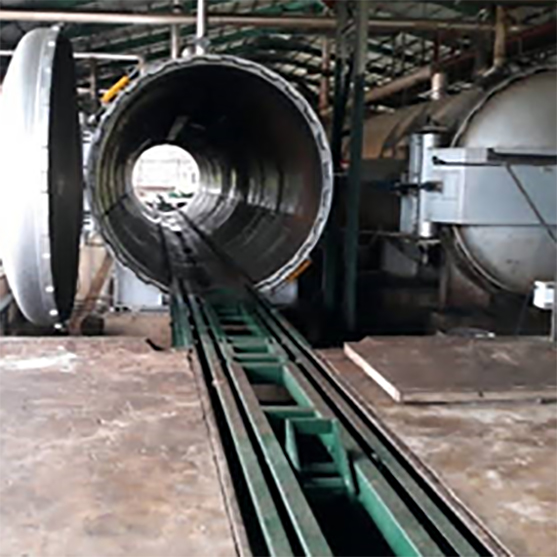
The processing cycle in each mill is the same. Loaded cages are run into sterilisation chambers where bunches are subjected to pressurised steam sterilisation for approximately two hours. Sterilised bunches are then transferred to thresher drums, where individual fruitlets are separated from the fibrous bunch base. The separated fruitlets pass to a screw press which extracts the CPO from the fleshy pulp or mesocarp leaving a press-cake containing fibre and nuts. Extracted CPO then proceeds through clarification, purification and vacuum drying processes, after which it is pumped to tanks adjacent to each mill for temporary storage.
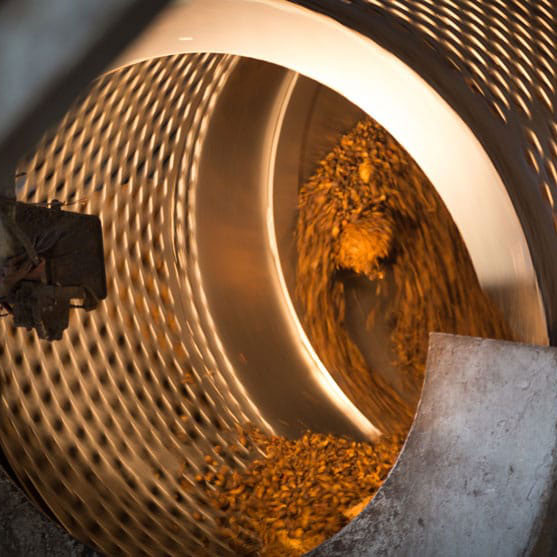
Press cake residues are separated by pneumatic separation (winnowing) into fibre and nuts and the nuts are passed to a nut cracker where the palm kernels are separated from their shells. Two of the group’s oil mills each incorporate, within the overall facility, a palm kernel crushing plant where the palm kernels are further processed to extract the CPKO that they contain.
Each kernel crushing plant has a capacity of 150 tonnes of kernels per day, which is sufficient to process all kernel output from the groups three oil mills.
The residues are not wasted: the fibre is used as fuel in the boiler; the empty fruit bunches are recycled as organic compost; and effluent from the mills is reprocessed at REA’s biogas facilities which supply renewable electricity to its mills, estates, housing, and the surrounding communities.
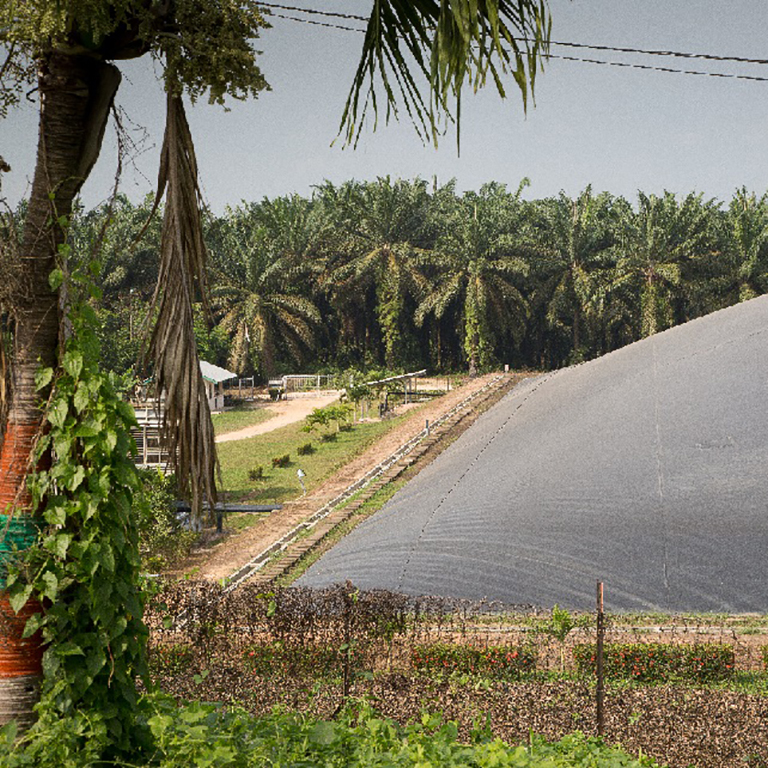
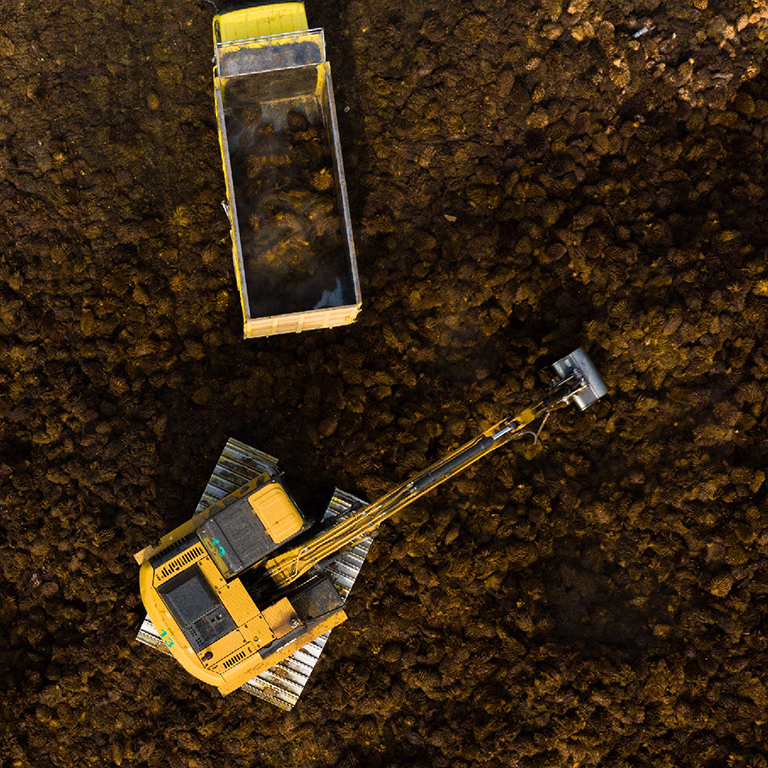
Delivery
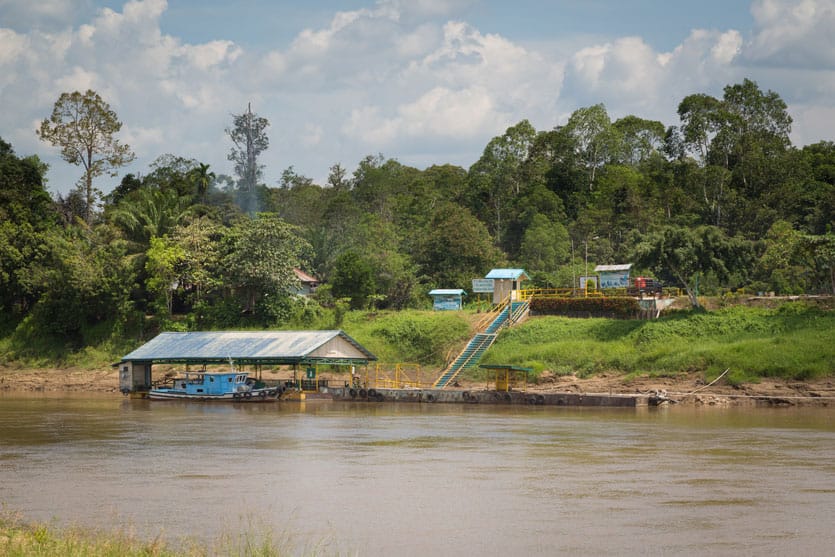
CPO and CPKO produced by the group’s oil mills are transferred by road tankers to nearby loading points on the Belayan River and from there downstream to a transhipment terminal near the mouth of the Mahakam River using a fleet of dedicated river barges. Here CPO and CPKO are stored pending collection by buyers (FOB sales) or loading to seagoing barges for delivery to buyers elsewhere in Indonesia or to international destinations (CIF Sales). A fleet of trucks is also maintained to ensure that CPO and CPKO can be evacuated by road during dry periods when river levels are too low for barge transport.